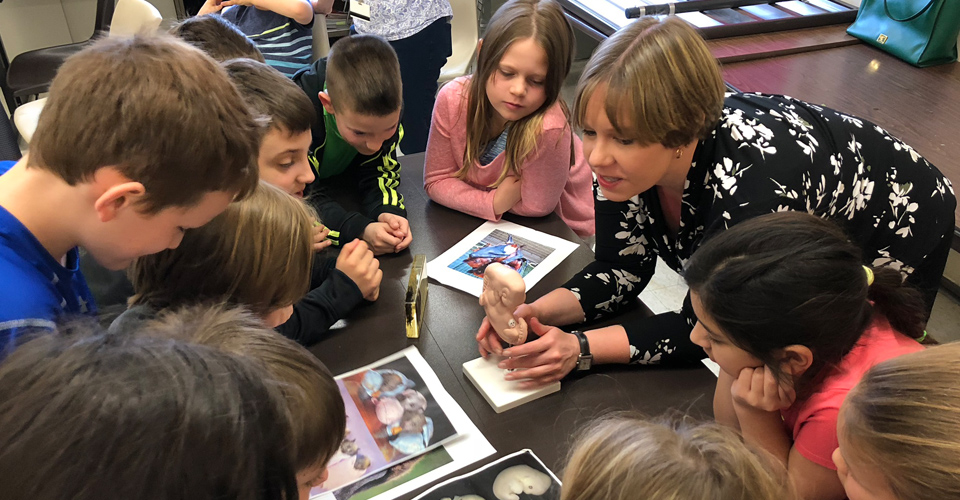Lisa Cooper, Ph.D., an assistant professor of anatomy and neurobiology, recently wowed a group of third graders at McDowell Elementary School in Hudson, Ohio, when she explained that bats native to Northeast Ohio eat 1,000 mosquitos per hour.
When Dr. Cooper asked a group of students if they could eat 1,000 cookies in an hour, a few ambitious students shouted, “Yes!”
Dr. Cooper, along with Hope Ball, Ph.D., a postdoctoral fellow in Dr. Cooper’s lab, and Tobin Hieronymus, Ph.D., an assistant professor of anatomy and neurobiology, travel around Ohio to educate high school, elementary and pre-school students on all things bats.
The “bat team” held interactive one-hour sessions at McDowell Elementary to teach the eight- and nine-year old students about what the winged mammals eat, why they have such large wings as babies, compare human versus bat bones, and more.
Hands-on learning
Dr. Cooper explained bat’s wing membranes feel similar to the outside of our eyelids and had the class gently rub their eyelids with their fingers to understand what she was talking about.
What about navigation? How do bats find their way around dark caves? Dr. Hieronymus gave an echolocation demonstration by putting on a blindfold and finding Dr. Cooper on the other side of the classroom by using sharp clicking noises with his mouth.
Later, Dr. Hieronymus put the students’ flying capabilities to test. Bats can stay in the air for hours. The students however? Despite their valiant attempts of flapping their arms and jumping as high as they could, their airborne experiences lasted no longer than a few seconds.
